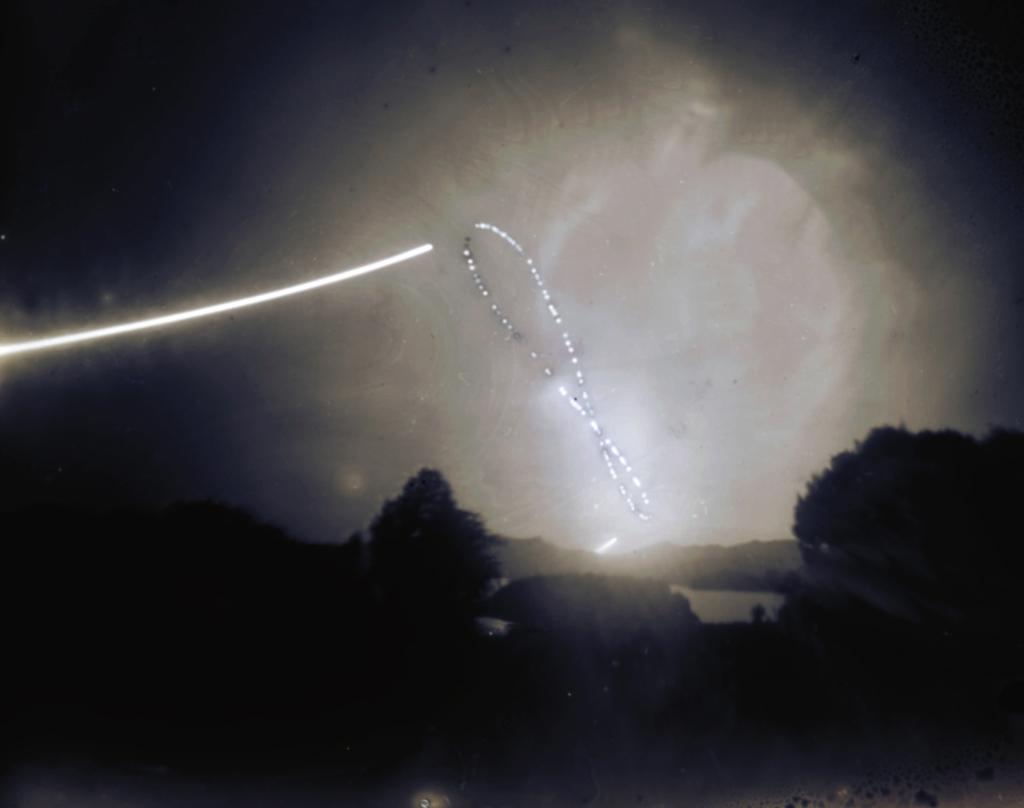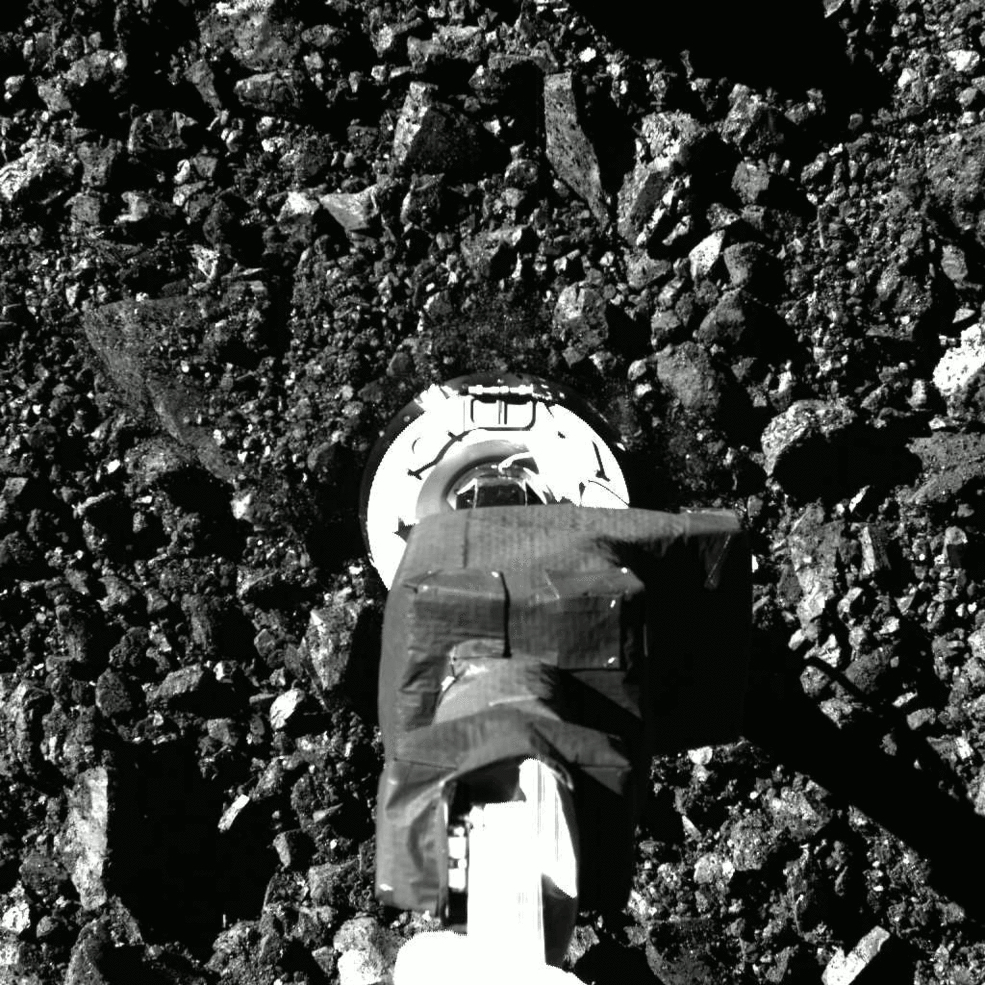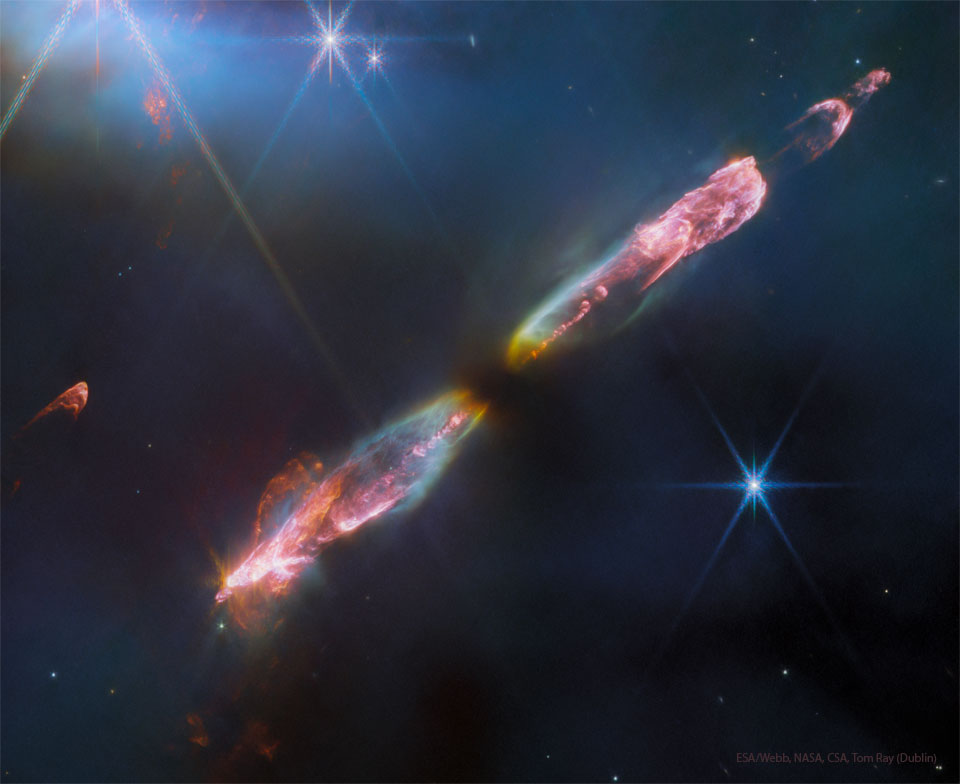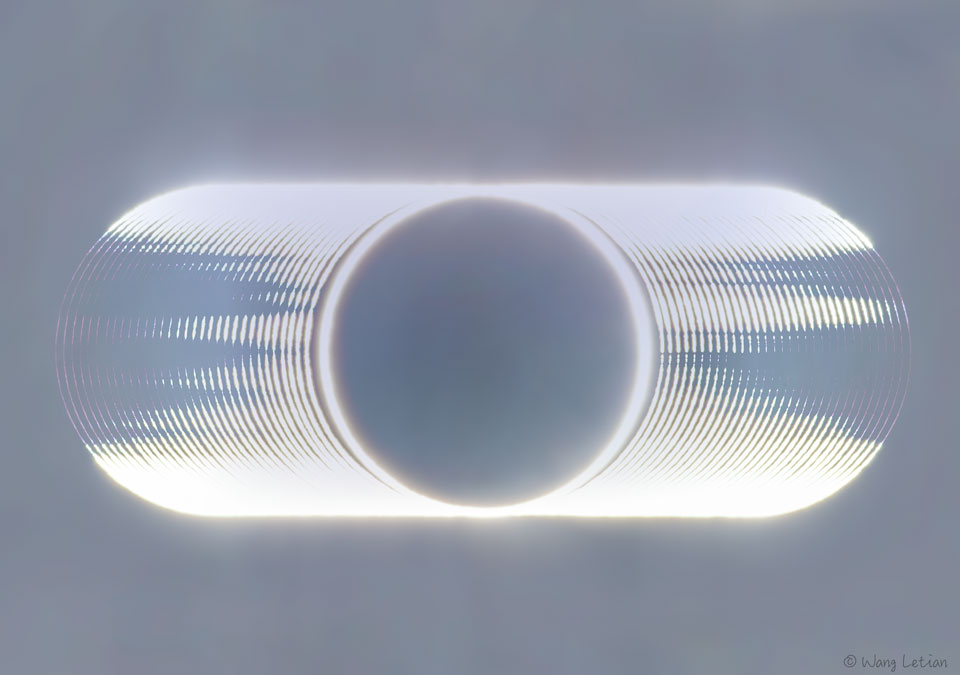Nombre total de pages vues
25/09/2023
AERONAUTIQUE - INVENTIONS QUI N'ONT JAMAIS VOLE - Les machines volantes : Charles Guillé et Thilorier
23/09/2023
ASTRONOMY - Afternoon Analemma
2023 September 23
Image Credit & Copyright: Ian Griffin (Otago Museum)
Explanation: An analemma is that figure-8 curve you get when you mark the position of the Sun at the same time each day for one year. To make this one, a 4x5 pinhole camera was set up looking north in southern New Zealand skies. The shutter was briefly opened each clear day in the afternoon at 4pm local time exposing the same photosensitized glass plate for the year spanning September 23, 2022 to September 19, 2023. On two days, the winter and summer solstices, the shutter was opened again 15 minutes after the main exposure and remained open until sunset to create the sun trails at the bottom and top of the curve. The equinox dates correspond to positions in the middle of the curve, not the crossover point. Of course, the curve itself is inverted compared to an analemma traced from the northern hemisphere. And while fall begins today at the Autumnal Equinox for the northern hemisphere, it's the Spring Equinox in the south.
22/09/2023
AERONAUTIQUE - LES INVENTIONS QUI N'ONT JAMAIS VOLE - Le Hughes H-4 Hercules d'Howard Hugues
ASTRONOMY - Cosmos in Reflection
2023 September 21
Image Credit & Copyright: Jeff Dai (TWAN)
Explanation: During the day, over 12,000 large mirrors reflect sunlight at the 100-megawatt, molten-salt, solar thermal power plant at the western edge of the Gobi desert near Dunhuang, Gansu Province, China. Individual mirror panels turn to track the sun like sunflowers. They conspire to act as a single super mirror reflecting the sunlight toward a fixed position, the power station's central tower. During the night the mirrors stand motionless though. They reflect the light of the countless distant stars, clusters and nebulae of the Milky Way and beyond. This sci-fi night skyscape was created with a camera fixed to a tripod near the edge of the giant mirror matrix on September 15. The camera's combined sequence of digital exposures captures concentric arcs of celestial star trails through the night with star trails in surreal mirrored reflection.
21/09/2023
ASTRONOMY - Tagging Bennu
2023 September 21
Image Credit: OSIRIS-REx, University of Arizona, NASA, Goddard Scientific Visualization Studio
Explanation: The OSIRIS-REx spacecraft's arm reached out and touched asteroid 101955 Bennu on October 20, 2020, after a careful approach to the small, near-Earth asteroid's boulder-strewn surface. Dubbed a Touch-And-Go (TAG) sampling event, the 30 centimeter wide sampling head (TAGSAM) appears to crush some of the rocks in this close-up recorded by the spacecraft's SamCam. The image was snapped just after surface contact some 321 million kilometers from planet Earth. One second later, the spacecraft fired nitrogen gas from a bottle intended to blow a substantial amount of Bennu's regolith into the sampling head, collecting the loose surface material. And now, nearly three years later, on Sunday, September 24, that sample of asteroid Bennu is scheduled to arrive on planet Earth. The sample return capsule will be dropped off by the OSIRIS-Rex spacecraft as it makes a close flyby of Earth. Twenty minutes after the drop-off, the spacecraft will fire its thrusters to divert past Earth and continue on to orbit near-Earth asteroid 99942 Apophis.
20/09/2023
ASTRONOMY - Methane Discovered on Distant Exoplanet
2023 September 20
Illustration Credit: Ahmad Jabakenji (ASU Lebanon, North Star Space Art); Data: NASA, ESA, CSA, JWST
Explanation: Where else might life exist? One of humanity's great outstanding questions, locating planets where extrasolar life might survive took a step forward in 2019 with the discovery of a significant amount of water vapor in the atmosphere of distant exoplanet K2-18b. The planet and its parent star, K2-18, lie about 124 light years away toward the constellation of the Lion (Leo). The exoplanet is significantly larger and more massive than our Earth, but orbits in the habitable zone of its home star. K2-18, although more red than our Sun, shines in K2-18b's sky with a brightness similar to the Sun in Earth's sky. The 2019 discovery of atmospheric water was made in data from three space telescopes: Hubble, Spitzer, and Kepler, by noting the absorption of water-vapor colors when the planet moved in front of the star. Now in 2023, further observations by the Webb Space Telescope in infrared light have uncovered evidence of other life-indicating molecules -- including methane. The featured illustration imagines exoplanet K2-18b on the far right orbited by a moon (center), which together orbit a red dwarf star depicted on the lower left.
19/09/2023
ASTRONOMY - HH 211: Jets from a Forming Star
2023 September 19
Credit: NASA, ESA, CSA, Webb; Processing: Tom Ray (DIAS Dublin)
Explanation: Do stars always create jets as they form? No one is sure. As a gas cloud gravitationally contracts, it forms a disk that can spin too fast to continue contracting into a protostar. Theorists hypothesize that this spin can be reduced by expelling jets. This speculation coincides with known Herbig-Haro (HH) objects, young stellar objects seen to emit jets -- sometimes in spectacular fashion. Pictured is Herbig-Haro 211, a young star in formation recently imaged by the Webb Space Telescope (JWST) in infrared light and in great detail. Along with the two narrow beams of particles, red shock waves can be seen as the outflows impact existing interstellar gas. The jets of HH 221 will likely change shape as they brighten and fade over the next 100,000 years, as research into the details of star formation continues.
18/09/2023
ASTRONOMY - Moon Mountains Magnified during Ring of Fire Eclipse
2023 September 17
Credit & Copyright: Wang Letian (Eyes at Night)
Explanation: What are those dark streaks in this composite image of a solar eclipse? They are reversed shadows of mountains at the edge of the Moon. The center image, captured from Xiamen, China, has the Moon's center directly in front of the Sun's center. The Moon, though, was too far from the Earth to completely block the entire Sun. Light that streamed around the edges of the Moon is called a ring of fire. Images at each end of the sequence show sunlight that streamed through lunar valleys. As the Moon moved further in front of the Sun, left to right, only the higher peaks on the Moon's perimeter could block sunlight. Therefore, the dark streaks are projected, distorted, reversed, and magnified shadows of mountains at the Moon's edge. Bright areas are called Baily's Beads. Only people in a narrow swath across Earth's Eastern Hemisphere were able to view this full annular solar eclipse in 2020. Next month, though, a narrow swath crossing both North and South America will be exposed to the next annular solar eclipse. And next April, a total solar eclipse will be visible across North America.
ASTRONOMY - The Red Sprite and the Tree
2023 September 18
Credit & Copyright: Maxime Villaeys
Explanation: The sprite and tree could hardly be more different. To start, the red sprite is an unusual form of lightning, while the tree is a common plant. The sprite is far away -- high in Earth's atmosphere, while the tree is nearby -- only about a football field away. The sprite is fast -- electrons streaming up and down at near light's speed, while the tree is slow -- wood anchored to the ground. The sprite is bright -- lighting up the sky, while the tree is dim -- shining mostly by reflected light. The sprite was fleeting -- lasting only a small fraction of a second, while the tree is durable -- living now for many years. Both however, when captured together, appear oddly similar in this featured composite image captured early this month in France as a thunderstorm passed over mountains of the Atlantic Pyrenees.
OCEANOGRAPHIE - Vagues scélérates - La vague Draupner ou Vague du Nouvel-An - 4/29 -
Connue sous le nom de vague Draupner, ou Vague du Nouvel-An, elle reste la plus haute vague jamais enregistrée à un endroit fixe, avec une h...

-
2022 September 26 All the Water on Planet Earth Illustration Credit: Jack Cook, Adam Nieman, Woods Hole Oceanographic Institution ; Data ...
-
2021 August 11 Mammatus Clouds over Saskatchewan Image Credit & Copyright: Michael F Johnston Explanation: When do cloud bottoms appe...







